Showing Spotlights 201 - 208 of 338 in category All (newest first):
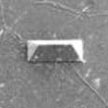 Getting from 2D to 3D has been quite a challenge for the graphene community. The transfer of two-dimensional graphene onto three-dimensional surfaces has proven to be difficult due to the fractures in graphene caused by local stresses. New research is bound to change that. Scientists have demonstrated graphene integration into a variety of different microstructured geometries - pyramids, pillars, domes, inverted pyramids, as well as the integration of hybrid structure of graphene decorated with gold nanoparticles on 3D structures.
Getting from 2D to 3D has been quite a challenge for the graphene community. The transfer of two-dimensional graphene onto three-dimensional surfaces has proven to be difficult due to the fractures in graphene caused by local stresses. New research is bound to change that. Scientists have demonstrated graphene integration into a variety of different microstructured geometries - pyramids, pillars, domes, inverted pyramids, as well as the integration of hybrid structure of graphene decorated with gold nanoparticles on 3D structures.
Jun 29th, 2015
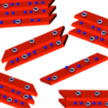 While exploring the possibility to realize graphene-like nanostructures of boron, carbon's neighbor in the periodic table, a team of chemical engineers has discovered an entirely new family of 2-D compounds. They demonstrated exfoliation of a well-known superconductor magnesium diboride, a layered material that consists Mg atoms sandwiched in between born honeycomb planes. These nanosheets can be an order of magnitude more transparent compared to their cousin graphene.
While exploring the possibility to realize graphene-like nanostructures of boron, carbon's neighbor in the periodic table, a team of chemical engineers has discovered an entirely new family of 2-D compounds. They demonstrated exfoliation of a well-known superconductor magnesium diboride, a layered material that consists Mg atoms sandwiched in between born honeycomb planes. These nanosheets can be an order of magnitude more transparent compared to their cousin graphene.
Jun 17th, 2015
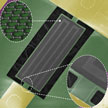 The key challenges associated with the development of high performance MEMS and NEMS resonators for RF wireless communication and sensing applications are the isolation of energy-dissipating mechanisms and scaling of the device volume in the nanoscale size-range. Researchers show that graphene-electrode based piezoelectric NEMS resonators operate at their theoretical 'unloaded' frequency-limits, with significantly improved electromechanical performance compared to metal-electrode counterparts, despite their reduced volumes.
The key challenges associated with the development of high performance MEMS and NEMS resonators for RF wireless communication and sensing applications are the isolation of energy-dissipating mechanisms and scaling of the device volume in the nanoscale size-range. Researchers show that graphene-electrode based piezoelectric NEMS resonators operate at their theoretical 'unloaded' frequency-limits, with significantly improved electromechanical performance compared to metal-electrode counterparts, despite their reduced volumes.
Jun 16th, 2015
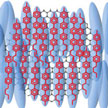 Graphene acts as an excellent conductor to electric fields along its flat surface and as an insulator perpendicular to the surface. Due to this anisotropic nature of graphene's conductivity, graphene flakes have potential applications in nanoscale switches and nano-electromechanical systems. Controlling the orientation of graphene flakes therefore has drawn a great deal of research interest in nanotechnology. In new work, researchers have developed a technique to control the orientation of graphene flakes at the nanoscale by using a nematic liquid crystal platform.
Graphene acts as an excellent conductor to electric fields along its flat surface and as an insulator perpendicular to the surface. Due to this anisotropic nature of graphene's conductivity, graphene flakes have potential applications in nanoscale switches and nano-electromechanical systems. Controlling the orientation of graphene flakes therefore has drawn a great deal of research interest in nanotechnology. In new work, researchers have developed a technique to control the orientation of graphene flakes at the nanoscale by using a nematic liquid crystal platform.
May 25th, 2015
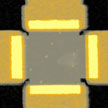 Magnetic field sensors are in very high demand for precise measurements of position, proximity and motion. The most commonly used Hall Effect devices are fabricated with silicon. The sensitivities of these sensors - voltage and current - depend on the device materials electronic properties such as charge carrier mobility and density. However, for futuristic advanced applications higher sensitivity Hall sensors are required than can be achieved with silicon. Researchers now have set a new world record for the sensitivity of Hall sensors using highest quality graphene encapsulated in hexagonal boron nitride.
Magnetic field sensors are in very high demand for precise measurements of position, proximity and motion. The most commonly used Hall Effect devices are fabricated with silicon. The sensitivities of these sensors - voltage and current - depend on the device materials electronic properties such as charge carrier mobility and density. However, for futuristic advanced applications higher sensitivity Hall sensors are required than can be achieved with silicon. Researchers now have set a new world record for the sensitivity of Hall sensors using highest quality graphene encapsulated in hexagonal boron nitride.
May 21st, 2015
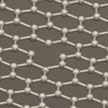 Counter intuitive to our idea of 'perfection equals best performance', researchers have shown that defects in nanocarbons could provide a breakthrough for increasing the quantum capacitance. By subjecting graphene layers to a reactive-ion etching process, the team has poked holes into graphene to create holey graphene, which can change the microscopic distribution of electrons and thereby increase the quantum capacitance of graphene by at least fourfold.
Counter intuitive to our idea of 'perfection equals best performance', researchers have shown that defects in nanocarbons could provide a breakthrough for increasing the quantum capacitance. By subjecting graphene layers to a reactive-ion etching process, the team has poked holes into graphene to create holey graphene, which can change the microscopic distribution of electrons and thereby increase the quantum capacitance of graphene by at least fourfold.
May 5th, 2015
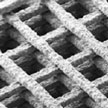 From a 3D printing perspective, graphene has been previously incorporated into 3D printed materials, but most of these constructs comprise no greater than about 20 volume % of the total solid of the composite, resulting in electrical properties that are significantly less than what has been achieced in new work. Here, researchers show that high volume fraction graphene composite constructs can be formed from an easily extrudable liquid ink into multi-centimeter scaled objects.
From a 3D printing perspective, graphene has been previously incorporated into 3D printed materials, but most of these constructs comprise no greater than about 20 volume % of the total solid of the composite, resulting in electrical properties that are significantly less than what has been achieced in new work. Here, researchers show that high volume fraction graphene composite constructs can be formed from an easily extrudable liquid ink into multi-centimeter scaled objects.
Apr 28th, 2015
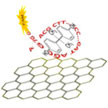 While the actual toxicity of Bisphenol A (BPA) is still debated, the direct measurement of BPA is difficult because of the weak response given by conventional electrochemical sensors, and current optical analysis methods are susceptible to the influence of interfering substances. A novel aptamer/graphene oxide FRET biosensor now provides a method for the rapid detection and risk assessment of BPA with high sensitivity and selectivity.
While the actual toxicity of Bisphenol A (BPA) is still debated, the direct measurement of BPA is difficult because of the weak response given by conventional electrochemical sensors, and current optical analysis methods are susceptible to the influence of interfering substances. A novel aptamer/graphene oxide FRET biosensor now provides a method for the rapid detection and risk assessment of BPA with high sensitivity and selectivity.
Apr 13th, 2015
 Getting from 2D to 3D has been quite a challenge for the graphene community. The transfer of two-dimensional graphene onto three-dimensional surfaces has proven to be difficult due to the fractures in graphene caused by local stresses. New research is bound to change that. Scientists have demonstrated graphene integration into a variety of different microstructured geometries - pyramids, pillars, domes, inverted pyramids, as well as the integration of hybrid structure of graphene decorated with gold nanoparticles on 3D structures.
Getting from 2D to 3D has been quite a challenge for the graphene community. The transfer of two-dimensional graphene onto three-dimensional surfaces has proven to be difficult due to the fractures in graphene caused by local stresses. New research is bound to change that. Scientists have demonstrated graphene integration into a variety of different microstructured geometries - pyramids, pillars, domes, inverted pyramids, as well as the integration of hybrid structure of graphene decorated with gold nanoparticles on 3D structures.
 Subscribe to our Nanotechnology Spotlight feed
Subscribe to our Nanotechnology Spotlight feed





